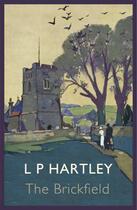-
Nombre de pages : (-)
-
Collection :
(-)
-
Genre :
(-)
-
Thème :
Non attribué
-
Prix littéraire(s) :
(-)
Résumé:
L.P. Hartley's moving exploration of a young boy's loss of innocence The Go-Between is edited with an introduction and notes by Douglas Brooks-Davies in Penguin Modern Classics.
'The past is a foreign country: they do things differently there' When one long, hot summer, young Leo is staying... Voir plus
L.P. Hartley's moving exploration of a young boy's loss of innocence The Go-Between is edited with an introduction and notes by Douglas Brooks-Davies in Penguin Modern Classics.
'The past is a foreign country: they do things differently there' When one long, hot summer, young Leo is staying with a school-friend at Brandham Hall, he begins to act as a messenger between Ted, the farmer, and Marian, the beautiful young woman up at the hall. He becomes drawn deeper and deeper into their dangerous game of deceit and desire, until his role brings him to a shocking and premature revelation. The haunting story of a young boy's awakening into the secrets of the adult world, The Go-Between is also an unforgettable evocation of the boundaries of Edwardian society.
Leslie Poles Hartley (1895-1972) was born in Whittlesey, Cambridgeshire, and educated at Harrow and Balliol College, Oxford. For more than thirty years from 1923 he was an indefatigable fiction reviewer for periodicals including the Spectator and Saturday Review. His first book, Night Fears (1924) was a collection of short stories; but it was not until the publication of Eustace and Hilda (1947), which won the James Tait Black prize, that Hartley gained widespread recognition as an author. His other novels include The Go-Between (1953), which was adapted into an internationally-successful film starring Julie Christie and Alan Bates, and The Hireling (1957), the film version of which won the Palme d'Or at the Cannes Film Festival.
If you enjoyed The Go-Between, you might like Barry Hines's A Kestrel for a Knave, also available in Penguin Modern Classics.
'Magical and disturbing' Independent 'On a first reading, it is a beautifully wrought description of a small boy's loss of innocence long ago. But, visited a second time, the knowledge of approaching, unavoidable tragedy makes it far more poignant and painful' Express
Donner votre avis















